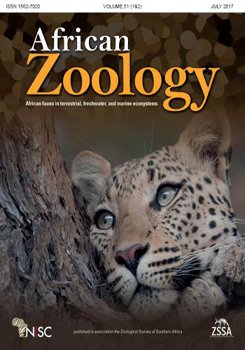Invertebrate drift is one of several fundamental ecological processes in streams. However, little is known about the dynamics of invertebrate drift in Kenyan streams. In this study, we assessed invertebrate drift in two rivers, i.e. Njoro and Kamweti, that differ in the level of anthropogenic disturbances, between February and March, 2016. The aim was to evaluate the effect of river sampling duration (5, 10, 15, 20 and 25 min) and sampling period (day or night) on invertebrate drift densities. The 5-minute sampling period resulted in significantly higher mean drift densities than the other time intervals in both rivers. The highest mean drift density (2.0 ± 0.9 individuals m-3) was recorded at the Njoro River during the day, whereas the lowest drift density (0.3 ± 0.2 individuals m-3) was recorded at the Kamweti River during the day. A strong nocturnal drift pattern was noted at the less disturbed river (Kamweti). The present results suggest that anthropogenic perturbations influence invertebrate drift densities, and sampling duration and sampling period are important factors to consider when sampling invertebrate drift.
How to translate text using browser tools
1 July 2018
Invertebrate Drift Densities in the Njoro and Kamweti Rivers in the Kenyan Highlands that Differ in the Level of Anthropogenic Disturbances
Charles M M'Erimba,
John G Mbaka,
Priscilla W Mureithi,
Ken O Ouma
ACCESS THE FULL ARTICLE

African Zoology
Vol. 53 • No. 2
July 2018
Vol. 53 • No. 2
July 2018
anthropogenic impacts
drift
Kenya
sampling duration
sampling period





